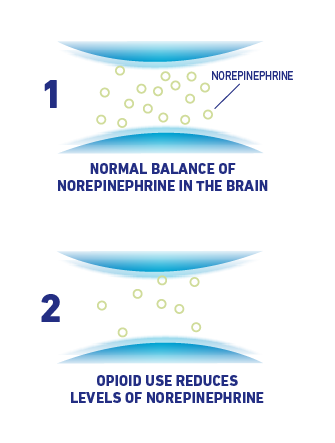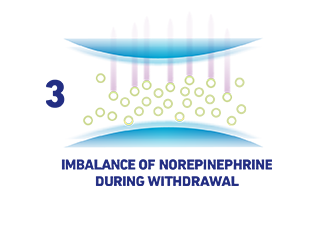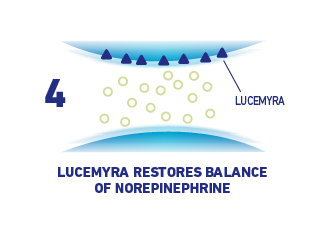LUCEMYRA is not a treatment for Opioid Use Disorder (OUD), which is also called opioid addiction. If you have been diagnosed with OUD, your healthcare provider may prescribe LUCEMYRA as part of a complete treatment program for your OUD. This program continues after LUCEMYRA treatment is completed and may also include maintenance medications combined with behavioral counseling.1
How LUCEMYRA® Works
Watch how LUCEMYRA helps relieve symptoms of opioid withdrawal
Long-term opioid use changes the way nerve cells work in the brain2
- When opioids are initially taken, the brain produces lower levels of a naturally occurring hormone, called norepinephrine, that can affect breathing, muscle tension, and the ability to sleep
- Over time, your nerve cells become used to having opioids around. Because opioids reduce the levels of norepinephrine, your body responds by adjusting these levels

When opioids are taken away suddenly, there is an imbalance of norepinephrine2
- The person will begin to feel lots of very unpleasant feelings and reactions. These are known as withdrawal symptoms

LUCEMYRA helps adjust the balance of norepinephrine in the areas of the brain that cause withdrawal symptoms1,2
- This helps restore the chemical balance and helps relieve the symptoms that occur during opioid withdrawal


References
- LUCEMYRA® (lofexidine) [Prescribing Information]. USWM, LLC; 2020.
- Kosten TR, George TP. The neurobiology of opioid dependence: implications for treatment. Sci Pract Perspect. 2002;13-20.




